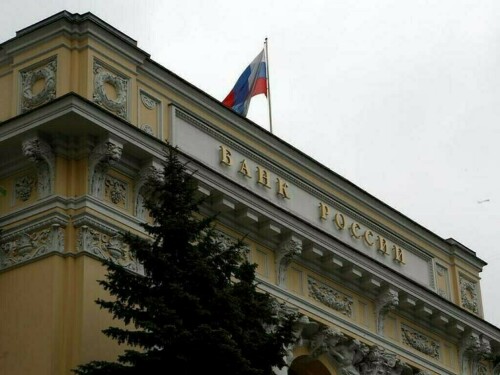Russian Central Bank Holds Steady at 21% Amid Economic Headwinds
MOSCOW: The Central Bank of Russia has decided to keep its benchmark interest rate unchanged at 21%. This decision comes as inflation shows signs of easing, but the Russian economy faces new challenges due to global economic uncertainty stemming from trade policies in the U.S.
In a released statement, the central bank highlighted that, “A continued slowdown in the global economy and potential declines in oil prices, driven by escalating trade tensions, could exert upward pressure on inflation through fluctuations in the rouble’s exchange rate.”
This course of action aligns with the consensus view from a poll of 25 analysts conducted by Reuters.
The central bank is maintaining its key interest rate at a level not seen since the early 2000s as it works to bring inflation under control. The rouble, which has appreciated by 37% against the dollar so far this year, has played a role in this effort by reducing the cost of imported goods.
According to the regulator, “Current inflationary pressures, including underlying factors, are still decreasing, albeit remaining at elevated levels.” The bank reaffirmed its inflation forecast for 2025, projecting a range of 7.0–8.0%, and anticipates a return to the 4.0% target in 2026.
The regulator suggested the possibility of future rate increases, forecasting an average key rate between 19.5–21.5% in 2025, compared to its previous estimate of 19-22%.
Despite sanctions and the ongoing conflict in Ukraine, the Russian economy has demonstrated greater resilience than initially anticipated over the past three years. However, the nation is now bracing for a sustained period of lower oil prices and reduced government revenue.
Natalya Orlova of Alfa Bank commented, “This decision signals that the central bank is establishing stable economic conditions to mitigate the uncertainty caused by trade conflicts and unstable oil prices.”
The central bank pointed out that economic activity has decelerated in the first quarter of 2025 compared to the fourth quarter of 2024. The proportion of businesses reporting labor shortages is also decreasing.
The central bank has kept its 2025 growth forecast at 1-2%, which is less than the government’s projection of 2.5%. The next policy meeting is scheduled for June 6.



Comments (0)
No comments yet. Be the first to comment!
Leave a Comment